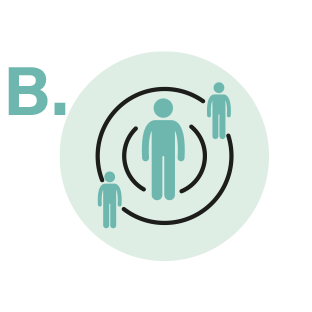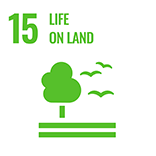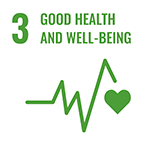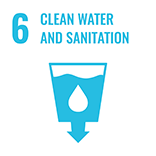Water for Eastern Equatoria (W4EE) project in South Sudan

Summary
The Water for Eastern Equatoria (W4EE) project, implemented between 2013 and 2019 in the Kenneti basin, South Sudan, aimed to develop integrated water resources management that was conflict-sensitive, climate-resilient, and that contributed to different local sectors.
The Imatong Mountains are located in south-eastern South Sudan, in the Eastern Equatoria region. These mountains and the neighboring areas are experiencing climate change effects manifested through prolonged periods of severe drought and water shortages, which greatly affect the economic activities of the communities that rely on natural resources for their livelihoods. Due to unsustainable activities such as deforestation, land degradation, and poor cultivation on hillsides, the Kenneti watershed has seen heavy soil erosion and pollution of the river. This in turn has threatened the lives of the communities whose water supply is interlinked with the watershed and the ecosystem’s wildlife populations.
Dry spells have created an increase in the competition for water resources between crop farmers and pastoralists, leading to conflict between these groups and conflicts between different pastoralist groups. During the rainy seasons, floods have caused damage to many farmers’ crops. This comes on top of the already tense political situation and the violent conflicts the country has experienced.
To develop resilience in the targeted communities, the W4EE project established sustainable water infrastructure (e.g. subsurface dams), put in place small water distribution systems and rehabilitated dilapidated water points. It was a large-scale project that sought to create a holistic approach to water management that would meet the needs of various groups, increasing water access for farmers to irrigate their crops during droughts and for pastoralists to provide for their animals. By having an inclusive agenda, the project solutions introduced collaborative structures and, as a result, reduced conflicts between groups depending on the same water resources.Additionally, farmers received equipment such as treadle water pumps to enhance their crop farming during the dry seasons, which has improved their ability to withstand pressure from climatic changes, promoted household food security and enabled them to generate an income from selling the surplus produce. Pastoralists also have improved access to water for their cattle thanks to the extension of water distribution points. Finally, given that in this region, fetching and collecting water is often part of women’s tasks, and that going out to fetch water poses a risk of violence for many of them, the new infrastructure installed has also contributed to improving women’s security.
The backbone of the solution is the institutional structure of the integrated water resource management of the Kenneti catchment and the surrounding areas.
Overview
- Location:
- Implementation sites:
-
- Single country
- Single location
- Mountain region:
-
Imatong Mountains
- Site locations:
-
Torit and Kapoeta States in Eastern Equatoria, South Sudan
- Solution scale:
- Ecosystem type(s):
- Solution type(s):
- Sector(s):
- Climate impact(s) addressed:
- Climate impact time-scale(s):
- Main benefit associated with the solution:
- Co-benefit(s) associated with the solution implementation:
- Implementation timeline:
-
- 2013 - 2019
Solution details
Main beneficiaries & outcomes
The project estimates to have benefited as many as 330,000 people by providing access to clean water. The W4EE constructed 93 new water points and rehabilitated 200 existing ones. Among the beneficiaries were 20,000 farmers and 16,500 students. The interventions improved household income, food security and the standards of living in the project area.
The armed conflict-affected the project, causing insecurity for implementers and participants. However, the close involvement of the community in the project established local ownership, which strongly contributed to successes despite the difficult surroundings. When the conflict intensified, the project adapted its plan to generate quick-impact interventions to address the resulting humanitarian crisis, particularly by seeking solutions to the insufficient food production and lack of income opportunities for residents.
Planning and implementation
The Water for Eastern Equatoria (W4EE) project was implemented by NIRAS International Consulting (Denmark), in close collaboration with WE Consult (Uganda) and Witteveen+Bos (Netherlands). It is one of the programs of the Multi-Annual Strategic Plan South Sudan 2012–2015 (MASP), a major international effort, led by the Embassy of the Kingdom of the Netherlands with the objective of strengthening South Sudan after becoming an independent country in 2011. W4EE was composed of three components:
- Component 1: Integrated water resource management of the Kenneti catchment and surrounds.
- Component 2: Conflict-sensitive management of water for productive use contributes to increased, sustained productivity, value addition in agriculture, horticulture, and livestock.
- Component 3: Safely managed and climate-resilient drinking water services and improved sanitation and hygiene are available, operated and maintained in a sustainable manner.
Finance
The project was supported by the Embassy of the Kingdom of the Netherlands with a grant of €28.4 million.
Innovation
W4EE served as a pilot for integrated water resource management programmes in South Sudan. The holistic approach of the project, from the creation and training of advanced GIS systems to building local management structures, can inspire other projects
Long term project sustainability and maintenance
To ensure the long-term sustainability of its achievements in the area, the project undertook capacity-building efforts within the national, state and local governments and among county staff, NGOs, water user associations, and common interest groups. At the same time, awareness-raising activities were carried out in local communities and schools for building a strong sense of ownership. During its second phase, the program mainly focused on supporting only those interventions where stakeholders at all levels would take ownership and responsibility for the activities, ensuring their sustainability.
Capacities for design and implementation
Knowledge
The technical expertise and experience of the project implementers were instrumental in the implementation of the solution, which sought to improve the technical knowledge and capacity of the government and local groups in areas such as integrated water resources management and hydrological monitoring, as well as to train villagers in the operations and maintenance of boreholes, pumps and small water distribution systems.
Technology
The project required a certain level of technological capacity from its implementers since simple water catchment, abstraction, and storage technologies were introduced to improve access for livestock and agriculture uses in the watershed. In addition, an operational GIS center, a water quality analysis laboratory, and hydrological monitoring expertise were also established.
Political / Legal
As mentioned above, central to the implementation of the project was the larger bilateral water program funded through the Dutch Multi-Annual Strategic Plan for South Sudan (2012-2015). However, the motivation of national, regional and local governments to support and participate in the project activities was also strong.
Institutional
Because many foreign organizations in South Sudan, including some of the project’s international implementing partners, were evacuated in response to the civil conflict, partnerships were created with the local government, and local organizations were supported to continue providing services. This approach, together with the attachment of government officials to the project and the recruitment of national professionals, resulted very effective and helped to make the results more sustainable and cost-effective.
Socio-cultural
Local community members and groups were fundamental in the development of the project activities and are very important for the continuity and possible future replication of the actions undertaken. Although some difficulties were encountered in involving the population in the early stages of the solution, taking a participatory process that involved all social actors was key. Local communities participated not only in the implementation of the measures but also in training and similar activities.
Outlook & Scalability
Barriers and adverse effects
The outbreak of civil war in 2013 and then in 2016 was one of the main problems faced by the project. However, modifications to its methods were quickly introduced to adapt to the reality of local situations and ensure compliance with the project’s mandate. Quick-impact interventions were introduced, such as the creation of poultry groups, vegetable cultivation, and the production of honey, liquid soap and peanut butter. These activities contributed as well to improving the livelihoods of those who had fled the war.
Transformation and future outlook
This solution favors a fundamental change in the areas involved, mainly by raising awareness from government levels down to the bottom level such as individuals. Adopting such an approach in this project has been considered a successful technique not only for implementing the planned measures but also for fostering the community’s commitment to preserving their surrounding natural habitats. The population, grouped into interest groups, has been made aware of the importance of the natural resources they have in the area, the importance of maintaining them, and the proper way to use them in a sustainable manner to prevent further degradation to the environment.
Potential for upscaling and replication
Since its planning, the project was intended as a pilot IWRM program in the two participating states that could be later replicated in other parts of the country. To this end, lessons learned and successful interventions have been shared and village savings, loans associations, and water and farm service centers have been connected with upcoming financial opportunities and potential new partners.









Comments
There is no content